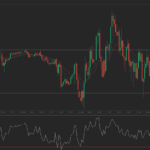West Texas Intermediate crude fell on Monday after rising the most in a month on Friday as prospects for the return of as much as 1 million bpd of Iranian oil to the global markets weighed on prices. Losses remained in check after worse-than-expected employment data released on Friday eased speculations the Federal Reserve will further cut its monetary stimulus at FOMCs upcoming meeting. Escalation of tension in Libya also supported the oil complex.
On the New York Mercantile Exchange, WTI crude for delivery in March fell by 0.37% to $92.61 per barrel by 9:02 GMT. Prices shifted in a daily range between $93.10 and $92.36 a barrel. The US benchmark rose by 1.2% on Friday, the largest daily gain since December 10th, and settled the week 1.3% lower after falling by 5.9% in the previous five-day period.
Meanwhile on the ICE, Brent futures for settlement in the same month lost 0.1% and traded at $106.50 a barrel at 9:02 GMT. Prices varied between days high and low of $106.95 and $106.21 a barrel respectively. The European benchmark rose by 0.8% on Friday, narrowing its premium to WTI to $14.53 a barrel.
US crude rose on Friday after a worse-than-expected jobs report curbed concerns the Federal Reserve will further curtail economic stimulus. The Department of Labor reported that US employers added 74 000 jobs in December, the least since January 2011, sharply underperforming expectations for a moderate retreat in job creation to 196 000 payrolls. November’s reading received an upward revision to 241 000 from initially estimated at 203 000.
The unemployment rate fell to 6.7%, the lowest level since October 2008 as more people left the labor force. The participation rate slid to 62.8%, equaling October’s reading as the lowest in more than three decades.
Fed Chairman Ben Bernanke said on December 18th that the Fed will continue to probably do a measured reduction in the pace of purchases at each meeting. According to a Bloomberg News survey of economists conducted on December 19, policy makers will cut Fed’s stimulus in $10 billion increments over the next seven committee meetings.
The downbeat data pressured down the US dollar, allowing raw materials priced in it to regain positions. The US dollar index, which measures the greenback’s performance against a basket of six major peers, fell by 0.07% to $80.68 by 8:36 GMT. The March contract lost 0.4% on Friday and settled the week 0.4% lower. Weakening of the greenback makes dollar-denominated commodities cheaper for foreign currency holders and boosts their appeal as an alternative investment.
Data by the U.S. Commodity Futures Trading Commission showed on Friday that money managers increased their net-short positions in NYMEX crude contracts by 18 115 to 52 674, while reducing net-long positions by 3 576 to 293 342.
Libyan tension
The oil market, and especially the Brent benchmark, drew support as ongoing tension between Libyan government forces and rebel groups kept crude output impaired. In another escalation of tension on Saturday, gunmen killed the countrys deputy industry minister, Hassan al-Drowi.
Supply concerns continued to persist despite a recent partial recovery in nationwide exports. Oil Minister Abdelbari Arusi said last week that the country is currently producing 650 000 barrels per day, of which 510 000 bpd is being exported. Output almost tripled after creeping at little over 200 000 bpd in December following a rare negotiation success for Prime Minister Ali Zeidan to reopen the western El Sharara oilfield. The field is currently producing 300 000 bpd, down from its full capacity of 340 000 bpd.
Also supporting Brent, renewed supply disruptions at North Seas Buzzard oilfield kept output impaired. The 200 000-bpd Buzzard oilfield had stopped again on Friday, just a day after operations were restarted following a previous closure.
Iran deal
Prices were pressured after the Iranian Foreign Ministry and the European Union said on Sunday that the deal between Iran and six world powers which was struck in November will come into force on January 20th. Easing tough sanctions on the Persian Gulf nations crude exports would allow the return of around 1 million barrels of oil per day to the global market, a significant drag on prices.
As a sign of the two sides determination, President Barack Obama urged the Congress not to impose additional sanctions on Iran so that the groundbreaking deal could go through.
However, a possible swap deal between Iran and Russia rattled the markets as it would allow the Islamic republic to significantly boost its crude exports, avoiding the current Western limitations. The two sides are negotiating a $1.5 billion oil-for-goods swap that would undermine the attempts of western major powers to curb Irans nuclear program in exchange for economic sanctions relief.





